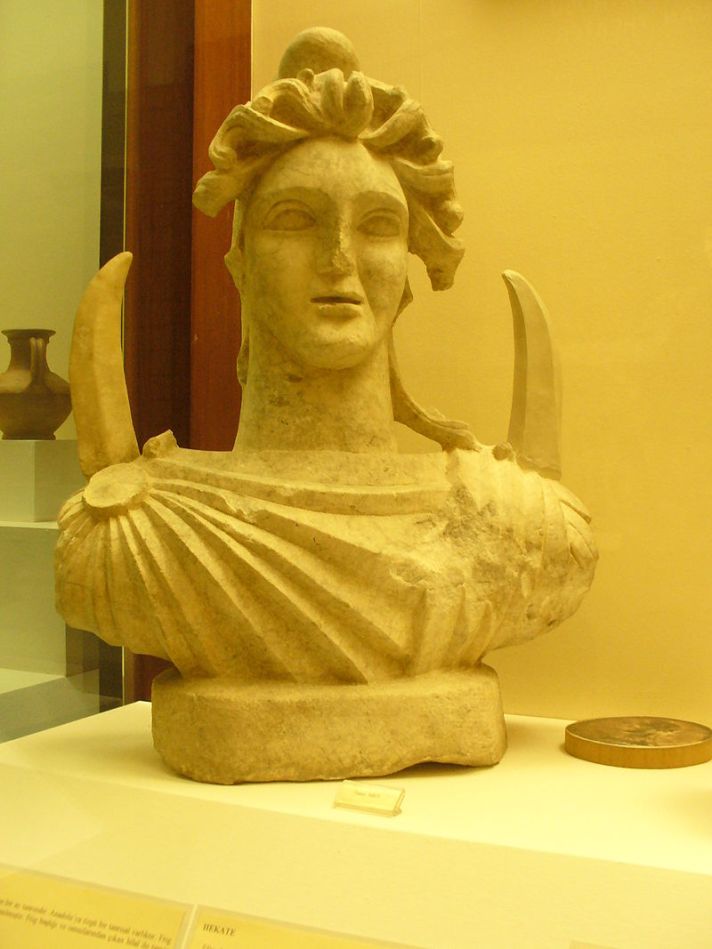Due to the influence of the Greek Artemis-Selene and the Latin Diana-Luna, we generally associate the moon with femininity. Among the Germanic nations, the moon is masculine and the sun feminine. It is the daughter of Sol, the Norse Sun-goddess, who in the regenerated world shall ride on her mother’s track when the gods are dead; and it is the god Mani, who at Ragnarok, the Twilight of the gods, shall be devoured by the Wolf of darkness, Managarmr (Moon-swallower), a reduplication of the terrible wolf Fenrir.

In Egypt, Chons is the personification of the moon. In this character, he is called Chonsaah or Chons the moon. His name seems to mean “the chaser,” or “pursuer”. He is said to be personified as the Unicorn who chases the Lion-sun. Another Kamic-lunar personage is Thoth, the weighing and measuring god as well as the lord of knowledge and writing. The crescent is found followed by the figure of Thoth in several hieroglyphic legends, with the phonetic name Aah.
Arabian mythology consider the moon masculine – a belief that survives to this day. In Sanskrit, the most current names for the moon, such as Kandra, Soma, Indu and Vidhu are masculine. The names of the moon are frequently used in the sense of month, and these and other names for month retain the same gender.
Yue Lao (old man under the moon), is a god of marriage and love in Chinese mythology. He is immortal and is said to live either in the moon or in the underworld. He appears at night, and unites with a silken cord all predestined couples, after which nothing can prevent their union.
During the Tang Dynasty, there was a young man named Wei Gu. Once he was passing the city of Songcheng, where he saw an old man leaning on his pack reading a book in the moonlight. Being amazed at it, Wei Gu walked up and asked what he was doing. The old man answered, “I am reading a book of marriage listing for who is going to marry whom. In my pack are red cords for tying the feet of husband and wife.” When Wei Gu and the old man came together to a marketplace, they saw a blind old woman carrying a three-year-old little girl in her arms. The old man said to Wei Gu, “This little girl will be your wife in the future.” Wei Gu was not too impressed by the looks of the little girl and thought this was too strange to believe. He ordered his servant to stab the girl with his knife.

Years later, a high official offered his daughter in marriage to Wei Gu who happily accepted and pleased that he finally found a wife. On the wedding night, he noticed a scar between her eye brows and enquired about it. His new wife told him about an incident where she was stabbed by a man in the City of Song. Wei Gu realized that his wife was that little girl whom he tried to kill – perhaps understandably, he never told his wife that he tried to have her murdered.
The cult of the Moon-god Mên in Asia Minor was widely established in Asia Minor. The Augustan History has the Roman emperor Carcalla (r. 198–217) venerate Lunus at Carrhae. This masculine variant of the feminine Latin noun luna (“Moon”), has been taken as a Latinized name for Mēn. The same source records the local opinion that anyone who believes the deity of the moon to be feminine shall always be subject to women, whereas a man who believes that the moon is masculine will dominate his wife.

Carcalla is also said to have visited the temple of Sin, the Babylonian and Assyrian Moon-god. The expression, “From the origin of the god Sin,” was used by the Assyrians to mark remote antiquity; because as chaos preceded order, so night preceded day, and the enthronement of the moon as the Night-king marks the commencement of the annals of cosmic order.
The Akkadian Moon-god, who corresponds with the Semitic Sin, is Aku, the Seated-father, as chief supporter of kosmic order. Among the Finns, Kuu is the male god of the moon, and exactly corresponds with Aku. It is singular to find also Kua as a moon-name in Central Africa.
Among the Mbocobis of South America, the moon is a man and the sun his wife. Amongst the Mexicans, Metztli, the Moon, was a hero. According to an Australian legend, Mityan, the Moon, was a native cat [male], who fell in love with some one else’s wife, and was driven away to wander ever since. The Khasias of the Himalaya say that the moon [male] falls monthly in love with his mother-in-law, who throws ashes in his face, which explains the spots we see on the moon.
